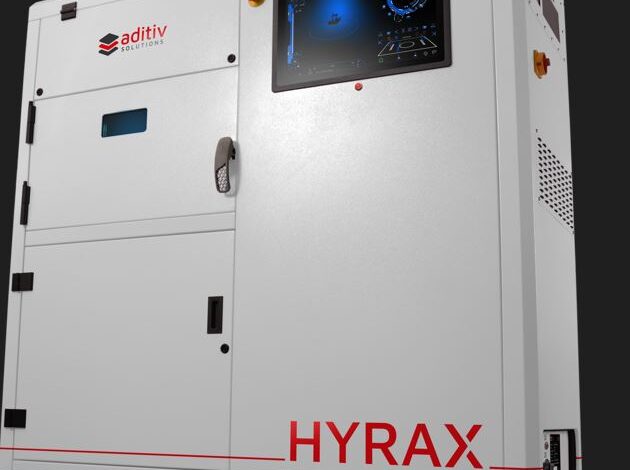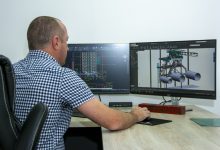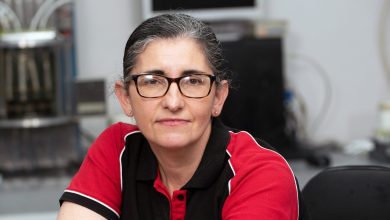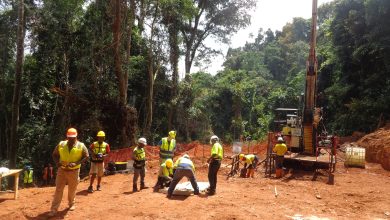
3D printing for fabrication of equipment components
Superior Manufacturing Technology for Specific Applications and Situations
Aditiv Solutions launched Hydrax metal 3D printer, its flagship Hydrax metal 3D printer, to outstanding critical acclaim at the 2022 Electra Mining. The innovation notched the award for “the most innovative new product“, lauded as “the most cost-efficient metal 3D printers on the market“. Encouraged by the response, the company is eager to meet the need for a powerful additional tool in the manufacturing toolbox in South Africa and the region.
Traditional manufacturing serves the need for equipment components in industries. But as recent developments indicate, there are specific applications and situations where traditional manufacturing may not suffice. Fascinatingly, this is where additive manufacturing (3D printing) is filling the void as an alternative superior manufacturing technology.
Marius Vermeulen, the Managing Director of Aditiv Solutions, predicts that industries like petrochemicals, mining, oil and gas in South Africa and the region will benefit enormously from utilising the convenience of additive manufacturing. This follows a successful exhibition at the 2022 Electra Mining Africa, where its locally developed and produced Hyrax metal 3D printer won the award for the most innovative new product. Hyrax metal 3D printer is currently hailed as “one of the most cost-efficient metal 3D printers on the market”.
Additive Solutions is upbeat about the increase in uptake for additive manufacturing technology in South Africa and the region. However, Vermeulen believes that it is important that industries are adequately well-versed in the rudiments of this groundbreaking innovation to make informed decisions and benefit more. In a quest to raise awareness, he particularly draws attention to the following areas: shortcomings of ‘Traditional manufacturing’; additive technology as a ‘powerful tool‘ in the broader manufacturing box; enormous advantages the technology is bringing to industries; and opportunities that new technology is opening up.
Shortcomings of “Traditional manufacturing”
At the outset, to appreciate the niche of additive technology as ‘a superior manufacturing technology for specific applications and situations’ better, it is imperative to analyse the shortcomings of “traditional manufacturing”.
While “Traditional manufacturing” serves the requirements of industry, there are several challenges that have highlighted its shortcomings. Chiefly, these include locations far from the point of consumption, huge environmental impact, and exposure to global events beyond the control of producers.
- Far from point of consumption
In many industrial sectors, on-demand manufacturing is employed to reduce inventory and storage requirements. However, “Traditional Manufacturing” is still mainly characterised by centralised, large-scale production, often far from the point of consumption. This may affect delivery timelines and component availability.
- Enormous environmental impact
Changes in regulations aimed at reducing climate change are obliging industries to comply with sound Environmental, Social and Governance (ESG) reporting requirements. Increasingly, ‘Traditional Manufacturing’ is being challenged due to the enormous environmental impact of carbon emissions and packaging requirements of the supply chains. This is prompting industries to explore alternative methods.
- Global events
“Traditional manufacturing” is still mainly characterised by centralised, large-scale production, often far from the point of consumption. Several global events in the last decade (such as COVID, blockage of shipping routes, maritime piracy, and war efforts) have also been highlighting a certain fragility in supply chains.
This has affected the operations of industries that need the certainty of supply of components, laments Vermeulen. “For some major industries, such as the mining, transport and power generation industries, complicated supply chains have an even greater impact where operations are often in remote global locations. Transport costs (monetary and environmental) for spares and accessories are much higher in these locations and lead times can have a detrimental impact on downtime. These facilities often keep tremendous stockpiles of spares and work on a “replace-not-repair” policy.”
Powerful additional “tool” in the manufacturing “toolbox
Conveniently, additive technology has become critical as a convenient alternative “local manufacturing” solution. However, Vermeulen clarifies that it is not a replacement technology for traditional manufacturing, but rather a powerful additional “tool” in the manufacturing “toolbox”. “The technology rather poses significant advantages which make it a superior manufacturing technology for specific applications and situations. Due to the nature of the technology, it also allows for the manufacture of components that was previously not possible, opening up new business models in a wide range of industries.”
Enormous advantages
Metal 3D printing has proven to be a technology with very specific advantages over conventional manufacturing processes, mainly in the following areas:
- The technology allows for the manufacture of net/near-net parts with very little material waste.
- The technology allows for the manufacture of highly complex geometries which inter alia allows for reducing the weight of parts, increasing the functionality of parts and also for reducing part count.
- The technology allows for distributed manufacturing models supported by digital part libraries that enable companies to manufacture on-site and on demand.
- Another advantage over some conventional manufacturing technologies is the ability to manufacture parts without the need for tooling.
- 3D printing also allows for the manufacture of low-volume components, as well as spare parts. This is especially true for older equipment where stores of tooling are required to be able to support equipment that has not been in production for a long time.
Ideal for diverse applications
With metal additive manufacturing, it is possible to produce intricate parts directly from CAD data. This feature makes it a viable manufacturing solution for many industries. Particularly, additive manufacturing is especially suited to applications where:
- Custom or individualised parts are required, such as the medical, dental and high-end sports goods industries;
- Low-volume production is required for example the manufacture of high-end or specialised equipment;
- Distributed or on-site manufacturing is required to reduce stockpiles, eliminate tooling, allow for just-in-time manufacturing and reduce long and complicated supply chains;
- Spare parts are required for out-of-service components;
- The manufacturing of intricate parts is required such as the production of heat exchangers, impellers, nozzles, etc.;
- Advanced tooling is required for example the manufacture of tooling with advanced conformal cooling channels and
- Where weight-saving is critical, for example, in the manufacture of electric vehicles and aerospace parts.
Rapidly expanding niche
Due to these advantages, as you would have thought, the niche of the additive manufacturing industry is expanding rapidly today, especially in the field of producing metal components for final part production. Thus, it is not surprising that additive manufacturing has already transformed several industries, such as the medical and dental industries.
Limitations of accessing additive manufacturing
With these enormous advantages, additive manufacturing should be a tool of choice where low volumes are required. However, the prohibitive cost of additive manufacturing systems, and the subsequent high cost of AM-produced parts, are limiting the use of the technology mainly to so-called, high-value, low-volume industries, such as the aerospace and medical industries.
Affordable machines options
Fortunately, more affordable metal 3D printing machines are emerging. This is starting to address the manufacturing requirements of a wider range of industries. By ensuring a more affordable solution, the possibilities arise for other industries to also capitalise on the advantages of AM.
Aditiv solutions’ complete customised solution
Aditiv Solutions is aware that while the emergence of new technologies presents affordable access to industries, it can also be a challenge when it comes to making informed decisions on suitable products. Thus, given this situation, Vermeulen affirms that Aditiv Solutions has affordable metal 3D printing solutions that can be customised to meet their specific needs. “We are a South African company with a focus on providing metal 3D printing solutions that address the needs of a wider range of industries.”
A Johannesburg-based outfit, Aditiv Solutions is vastly experienced in additive manufacturing, with some of the leading experts in South Africa in the development of high-end metal additive manufacturing machines. It has more than ten years of experience in metal AM with a specific focus on the development of custom metal additive manufacturing equipment.
Sidebar
Notable case studies
In the past five years, the application of 3D printing has been gaining traction in mainstream manufacturing. The following are among numerous applications:
- 3D printing in mining is used to manufacture prototypes and equipment parts. OEMs such as FLSmidth, Caterpillar, Epiroc and Sandvik have adopted the technology for parts manufacture.
- Anglo American has partnered with the South African Council for Scientific and Industrial Research (CSIR) and US-based technology company, Ivaldi Group, to boost supply chain efficiencies.
- In 2019, Sandvik manufactured a 3D-printed diamond composite using an additive manufacturing process called stereolithography. It produced industrial-grade diamonds for drilling and cutting.
- Siemens used additive technology to manufacture spare parts for trains.
With the introduction of affordable technologies to the market, the scope of applications of 3D printing (additive manufacturing) is set to broaden.






